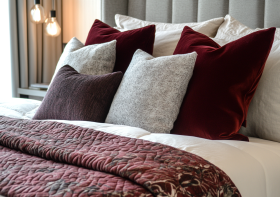How Design Influences Our Behavior and Mood

The environments we inhabit deeply influence our emotions, behaviors, and overall mental health. From the comfort of our homes to the functionality of our workspaces, the design and arrangement of our surroundings play a pivotal role in shaping our daily experiences. This blog post explores the fascinating intersection of interior design and psychology, shedding light on how different layouts, design choices, and spatial arrangements affect human psychology and behavior in various settings.
The Impact of Layouts on Movement and Interaction
The layout of a space dictates the flow of movement and the nature of interactions within it. In residential design, open floor plans are popular for fostering a sense of togetherness and ease of communication among family members. Conversely, more compartmentalized layouts can create private, intimate zones that support individual activities and reduce noise transfer.
In office environments, layouts can significantly influence productivity and teamwork. For example, an open-plan office may encourage collaboration and quick information exchange but can also lead to distractions and a lack of privacy. Understanding the balance between open and private spaces is crucial for optimizing workplace efficiency and employee satisfaction.

Color Psychology in Interior Design
Color is a powerful design tool known for its profound impact on emotions and behaviors. Different colors can evoke different feelings; for example, blue is often associated with calmness and can enhance productivity, making it a popular choice for offices. In contrast, warm colors like red or yellow can stimulate conversation and appetite, making them ideal for dining areas.
The choice of color in a room not only reflects aesthetic preferences but also affects mood and mental states. For instance, green is restorative and is often used in hospitals to promote healing and tranquility.

The Role of Lighting in Emotional Well-being
Lighting can dramatically affect our psychological health. Natural light boosts mood and energy, reduces stress, and regulates circadian rhythms, which is why many modern designs prioritize large windows that allow ample sunlight. In spaces where natural light is scarce, incorporating a variety of lighting sources, such as ambient, task, and accent lighting, can help mimic its effects and enhance functionality.
Artificial lighting should be chosen with care; for example, harsh fluorescent lighting can cause eye strain and anxiety, while softer, diffused lighting can create a calming and welcoming atmosphere.

Furniture Choices and Ergonomics
The ergonomics of furniture is not only about physical comfort but also about psychological comfort. In both homes and offices, ergonomic furniture can reduce physical discomfort and prevent injury, thereby enhancing well-being and productivity.
Comfortable seating, adjustable desks, and thoughtfully placed furnishings can make an environment more inviting and can encourage longer and more frequent use of the space, which is particularly important in settings such as libraries or study rooms.

Spatial Arrangements and Perceived Control
The arrangement of space can affect individuals’ perception of control over their environment, which in turn impacts their stress levels and satisfaction. For instance, having the ability to configure one’s workspace or adjust the layout of living furniture can empower individuals and foster a sense of ownership and comfort.

The psychology of space is a compelling aspect of interior design that highlights the symbiotic relationship between environments and the human mind. By understanding and applying principles of psychology in layout planning, color choices, lighting, and furniture selection, designers and homeowners alike can create spaces that not only meet functional needs but also enhance well-being and promote positive behaviors.
Embracing these insights can transform mundane spaces into nurturing environments that support mental health and improve quality of life, ultimately illustrating that good design is not just seen but is also felt.
To deepen your understanding of crafting unique and personalized spaces, consider acquiring my book, Basics of interior design, available on Amazon. This guide offers a comprehensive exploration of various design principles tailored to distinct environments, providing you with the knowledge and inspiration needed to transform any space. If you want to learn more about the colors in Interior design, buy my book Color theory in interior design from Amazon.




